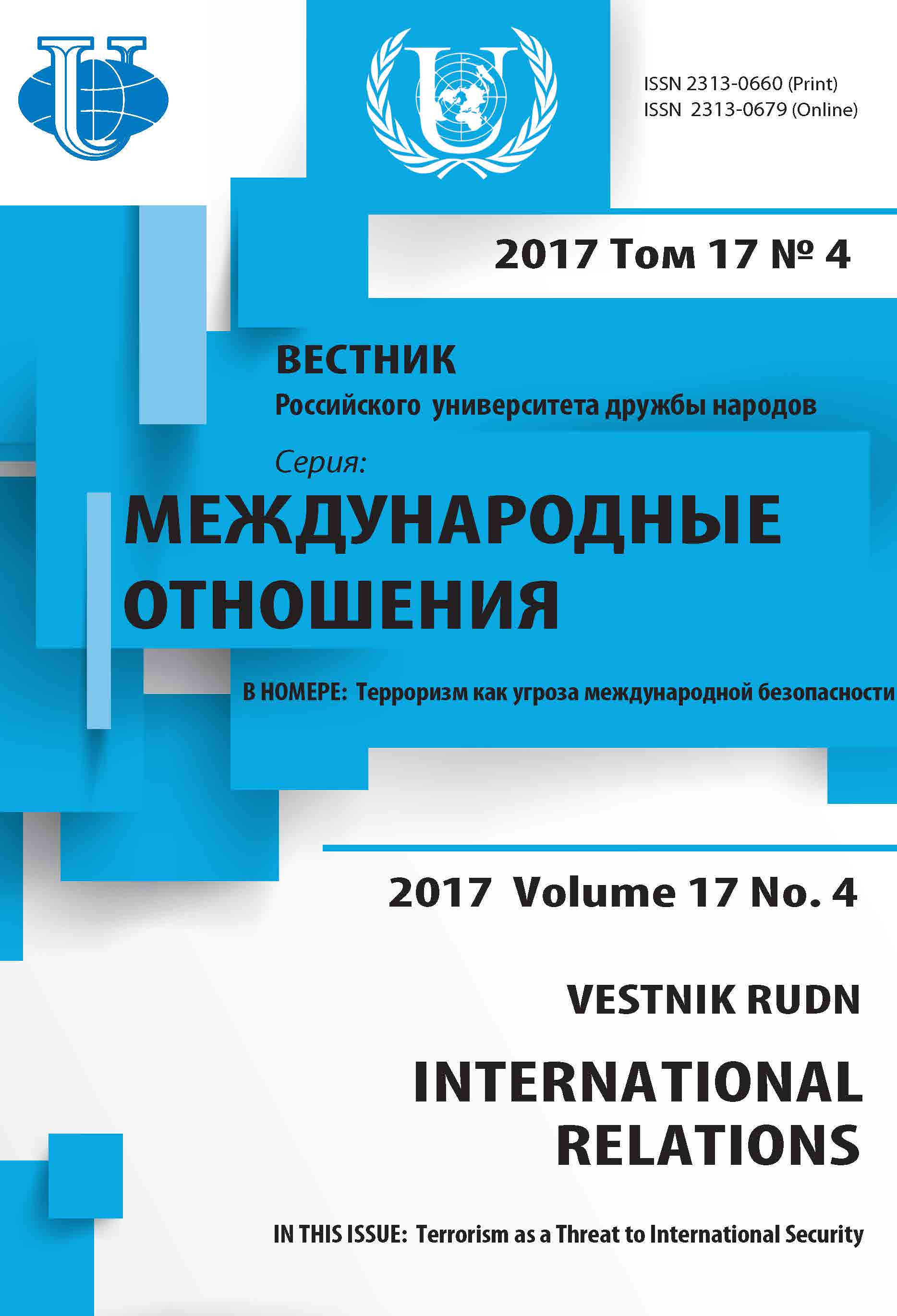“THE JIHAD OF MACHETES”. CAUSES AND CONSEQUENCES
- Authors: Kotin IY.1
-
Affiliations:
- Peter the Great Museum of Anthropology and Ethnography of the Russian Academy of Sciences
- Issue: Vol 17, No 4 (2017): Terrorism as a threat to international security
- Pages: 684-696
- Section: THEMATIC DOSSIER
- URL: https://journals.rudn.ru/international-relations/article/view/17528
- DOI: https://doi.org/10.22363/2313-0660-2017-17-4-684-696
- ID: 17528
Cite item
Full Text
Abstract
The aim of the research is to trace causes of the wave of terrorism in present day Bangladesh, to analyze the government’s response to it and to give possible scenarios of the further development of Bangladesh as the result of the clash between the government and radical Islamic terrorists. The research task is to make the monitoring of a press, the list of terrorist events and the list of victims and to analyze them. The main research method employed is historic one that puts all the events into the system of causes and consequences. The author finds the roots of present political instability in the ambiguous nature of Bangladesh and the conflict of the secular and the religious in its base. Bangladesh is the product of na-tionalist secession from the Islamic state of Pakistan while Pakistan is the result of Islamist secession from India. The author discusses numerous cases of terror in Bangladesh and attempts to give possible scenarios of political development in this South Asian country. The four most probable scenarios are the victory of the secular government, the change of the government and the domination of ‘mild Islamists’ in the new government, the Islamist victory and the new military coup that would suppress radical Islamists but also will suppress all legal political activity.
Keywords
About the authors
I Yu Kotin
Peter the Great Museum of Anthropology and Ethnography of the Russian Academy of Sciences
Author for correspondence.
Email: igorkotin@mail.ru
Kotin Igor Yur'evich - Doctor of History, Senior Research Fellow of the Peter the Great Museum of Anthropology and Ethnography of the Russian Academy of Sciences in Saint Petersburg, Professor of Saint Petersburg State University
References
- Dorokhin, P. (1990). Khussein Muhammad Ershad. Asia and Africa today, 6, 25—27. (In Russ.).
- Dutt, K., Dasgupta, R. & Chatterjee, A. (1973). Bangladeshi Economy. An Analytical Study. New Delhi: People’s Publishing House.
- Esposito, J.L. (1995). The Islamic Threat. Myth and Reality? New York-Oxford: Oxford University Press.
- Faruque, O. (2006). Bangladeshi Expatriates in Britain. Dhaka-London: Hihal Publications.
- Huntington, S.P. (2003). The Clash of Civilizations and the Remaking of World Order. New York: Simon and Schuster.
- Kotin, I. (2008). Islam in South Asia and Great Britain. Saint Petersburg: Petersburgskoe Vostokovedenie. (In Russ.).
- Madan, T.N. (1998). Coping with ethnicity in South Asia: Bangladesh, Punjab and Kashmir compared. Ethnic and Racial Studies, 5 (21), 969—989.
- Merenkova, O. & Kotin, I. (2016). The Bangladeshis in London. Saint Petersburg: MAE RAS. (In Russ.). Poole, E. (2002).
- Reporting Islam. Media Representations of British Muslims. London-New York: I.B. Tauris Publishers.
- Rubee, Kh. F. (2008). The Origin of Musalmans of Bengal. Calcutta: Thacker, Spink and Co. Reprint.
- Qureshi, H.A. (2002). The 1971 Indo-Pakistan War: A Soldier’s Narrative. Oxford-London: Oxford University Press.
- Simoniya, A.A. (2009). Who are the Rohingas? Asia and Africa today, 11, 27—31. (In Russ.).
- Suvorova, A.A. (2014). Between the Court and the Revenge: Destiny of woman in Bangladesh. Asia and Africa today, 11, 70—72. (In Russ.).
- Suvorova, A.A. (2014). The Daughter of Democracy: Triumphs and Falls of Hasiana Vazed. Asia and Africa today, 9, 35—39. (In Russ.).
Supplementary files










